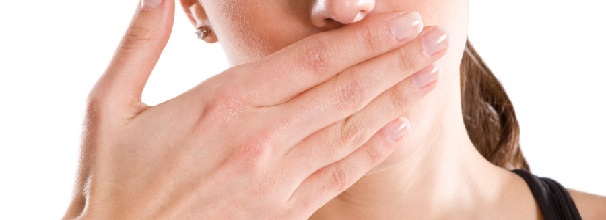 Once in awhile, one gets to experience having oral lesions which bring about pain when eating and talking. These mouth sores come in different varieties and may be caused by a number of factors including:
Once in awhile, one gets to experience having oral lesions which bring about pain when eating and talking. These mouth sores come in different varieties and may be caused by a number of factors including:
-
Infections from virus or fungi, or bacteria
-
Irritation from a loose orthodontic wire, or a denture that does not fit properly, or a sharp edge from a broken tooth or filling.
The two most recurrent mouth sores are fever blisters, also known as cold sores and canker sores. They may appear similar but fever blisters and canker sores have significant differences.
Fever Blisters
These are fluid-filled blisters that are commonly found on the lips. You can also see them on the gums and sometimes, at the roof of the mouth or the hard palate. These blisters are usually painful, although pain may already be felt a few days before the lesions appear. The fever blisters rupture within hours, then crust over and usually last from seven to ten days.
Fever blisters are contagious from when the blister ruptured, up until the sore is completely healed. At this time, there is greater risk for spreading infection. The virus can spread to the person’s eyes and genitalia, and to other people.
Causes of Recurring Fever Blisters
Fever blisters are the result of a herpes simplex virus that has become active. This virus is usually dormant until activated or triggered by stress, trauma, fever, exposure to sunlight, or hormonal changes. These blisters tend to reappear on the same spots they have appeared before.
Treatment and Prevention of Fever Blisters
Fever blisters are treated by coating the lesions with a protective barrier ointment that contains an antiviral agent such as 5% acyclovir ointment
Fever blisters may be prevented from spreading by:
-
Avoiding mucous membrane contact when there is a lesion
-
Not squeezing, pinching or picking the blisters
-
Washing hands carefully before touching eyes, genitalia area or another person
Canker Sores
Canker sores on the other hand are small, red or white shallow ulcers occurring on the tongue, soft palate, or inside the lips and cheeks. They are also called aphthous ulcers. They do not appear in the roof of the mouth or the gums. They are painful and can last from five to ten days.
Unlike fever blisters, canker sores are not caused by bacteria or viral agents. Hence, they are not contagious and they cannot be spread locally or to anyone else.
Causes of Canker Sores
Canker sores result from an altered local immune response associated with stress, trauma, or irritation. They are also caused by acidic foods such as citrus fruits, tomatoes, and some nuts.
Treatment and Prevention of Canker Sores
A topical corticosteroid preparation such as triamcinolone dental paste can be used to relieve discomfort and guard against infection. A home care treatment can be prepared by:
-
Applying a thin paste of baking soda and water to the sore
-
Mixing 1 part hydrogen peroxide with 1 part water and applying this mixture to the canker sores using a cotton swab
Mouth sores may be prevented if you:
-
Reduce stress
-
Stop smoking
-
Avoid injury to the mouth caused by severe tooth brushing, hard foods, braces or dentures
-
Chew slowly
-
Visit the dentist regularly and practice good dental hygiene
-
Eat a well-balanced diet
-
Drink plenty of water
-
Avoid very hot food or beverages
To know more about mouth sores, oral cancer and proper dental hygiene, please click on this link.
- St. Lawrence Dentistry Looks Forward To St. Patrick’s Day! - March 12, 2025
- Understanding Dental X-Rays and Radiation: What You Should Know - January 13, 2025
- Happy New Year from St. Lawrence Dentistry! - December 30, 2024










